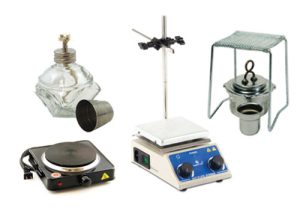Uncategorized
Basic Lab Kits for Elementary School Students
Basic Lab Kits for Elementary School Students
Introducing science to elementary school students is a wonderful way to nurture curiosity, critical thinking, and hands-on learning. At this stage, providing safe, engaging, and age-appropriate lab kits is essential to make science both fun and educational. At Glowtopis.com, we offer a range of basic lab kits tailored for young learners, ensuring their first steps into scientific exploration are exciting and memorable.
Why Lab Kits Are Essential for Elementary Students
Lab kits serve as the building blocks for young scientists. They bring theoretical concepts to life and allow students to learn by doing.
Key Benefits of Lab Kits for Young Learners
- Hands-On Learning: Encourages active participation and better retention.
- Fosters Curiosity: Sparks interest in STEM (science, technology, engineering, and math) fields.
- Builds Confidence: Simple experiments empower students to explore and solve problems.
- Safe Exploration: Age-appropriate tools provide a secure environment for experimentation.
By using basic lab kits, elementary students can explore topics like chemistry, physics, and biology in a fun, engaging way.

Essential Components of a Basic Lab Kit
A well-rounded lab kit for elementary students includes tools and materials that are safe, easy to use, and versatile. Here are the must-haves:
1. Magnifying Glass
A magnifying glass is perfect for introducing students to the art of observation. Whether examining leaves, insects, or rocks, it enhances their ability to notice details.
Features:
- Lightweight and easy to handle.
- Durable plastic lenses for safety.
Applications:
- Observing textures in natural objects.
- Learning about magnification and optics.
2. Test Tubes and Stands
Test tubes allow students to mix liquids and observe reactions safely. A test tube stand keeps everything organized and prevents spills.
Features:
- Plastic or shatter-resistant glass tubes for safety.
- Color-coded caps for easy identification.
Applications:
- Mixing colors to explore basic chemistry.
- Observing simple chemical reactions like baking soda and vinegar.
3. Measuring Tools
Measuring tools like beakers, measuring cups, and pipettes teach students the importance of accuracy in experiments.
Features:
- Clear measurement markings for easy reading.
- Durable materials like plastic or silicone.
Applications:
- Measuring liquids for experiments.
- Learning volume and capacity concepts.
4. Safety Gear
Safety should always be a priority, even for simple experiments. Basic safety gear includes goggles and gloves.
Features:
- Adjustable goggles for a snug fit.
- Non-toxic gloves for comfort and protection.
Applications:
- Protecting eyes and hands during experiments.
- Teaching the importance of lab safety.
5. Droppers and Syringes
Droppers and syringes are great for introducing concepts like volume, pressure, and flow.
Features:
- Easy-to-squeeze designs for small hands.
- Safe materials that are BPA-free.
Applications:
- Transferring liquids during experiments.
- Exploring water pressure and movement.
6. Microscope for Beginners
A simple microscope opens up the micro-world for young learners.

Features:
- Low magnification for ease of use.
- Sturdy and portable design.
Applications:
- Examining prepared slides of plants and insects.
- Observing small details in everyday objects.
7. Activity Cards or Experiment Guides
Activity cards provide step-by-step instructions for experiments, making it easy for students and teachers to get started.
Features:
- Visual instructions with simple language.
- Fun and engaging experiment ideas.
Applications:
- Guiding students through basic experiments.
- Encouraging independent learning.
Simple Experiments with Basic Lab Kits
Here are a few beginner-friendly experiments students can perform with a basic lab kit:
1. Volcano Eruption
- What You Need: Baking soda, vinegar, test tube, and food coloring.
- Steps:
- Fill a test tube halfway with vinegar.
- Add a drop of food coloring for effect.
- Slowly add baking soda and watch the “eruption.”
- Learning Outcome: Introduces chemical reactions.
2. Floating and Sinking
- What You Need: Beaker, water, and various small objects.
- Steps:
- Fill the beaker with water.
- Drop objects into the water and observe whether they float or sink.
- Learning Outcome: Teaches density and buoyancy.
3. Color Mixing
- What You Need: Droppers, water, primary-colored food dyes, and a tray.
- Steps:
- Add drops of different colors to water.
- Mix them to create secondary colors.
- Learning Outcome: Demonstrates color theory and ratios.
Tips for Using Lab Kits Effectively
- Supervision is Key: Always ensure adult supervision during experiments.
- Keep It Organized: Store materials in a safe, designated place.
- Document Observations: Encourage students to record their findings in a notebook.
- Discuss Results: Talk about what they learned from each experiment to reinforce concepts.
Why Choose Glowtopis.com for Lab Kits?
At Glowtopis.com, we specialize in providing high-quality, affordable lab kits designed for elementary school students.
What Sets Us Apart?
- Safe and Durable Products: All our kits are rigorously tested for safety.
- Age-Appropriate Tools: Tailored for young learners to ensure ease of use.
- Comprehensive Kits: Include everything needed for a variety of experiments.
- Customer Support: Our team is ready to help you choose the perfect kit for your needs.
Conclusion
Introducing science to elementary students doesn’t have to be complicated or expensive. With the right basic lab kit, young learners can explore, experiment, and develop a lifelong love for science.
Browse our collection of basic lab kits at Glowtopis.com today and empower the next generation of scientists!

